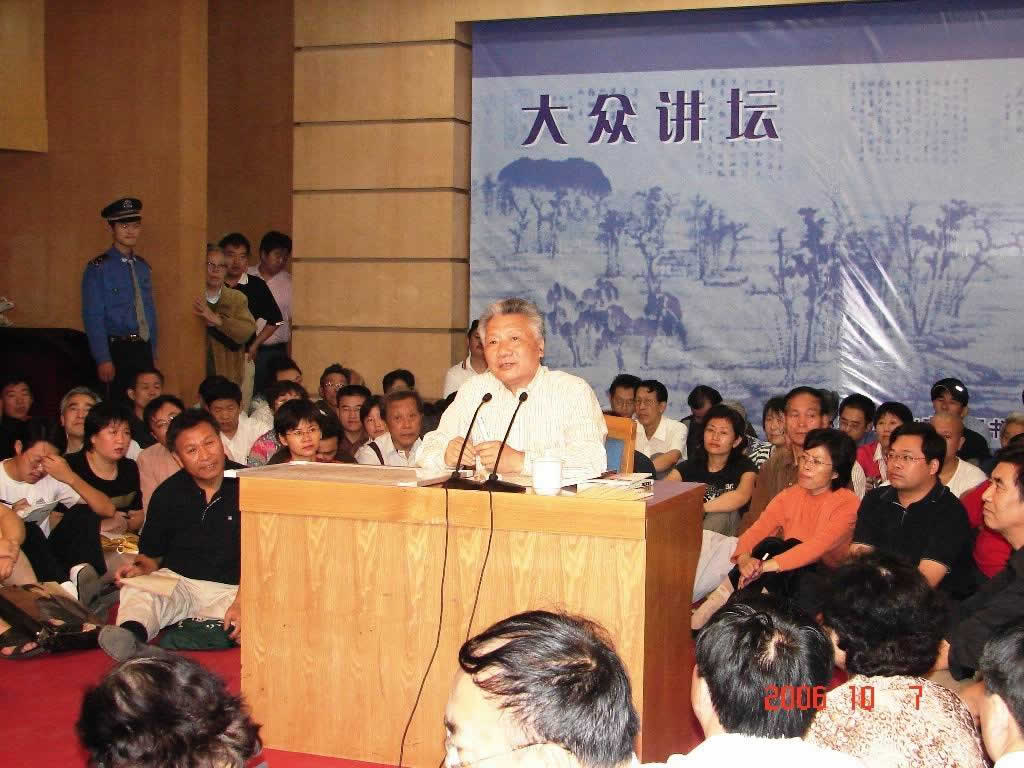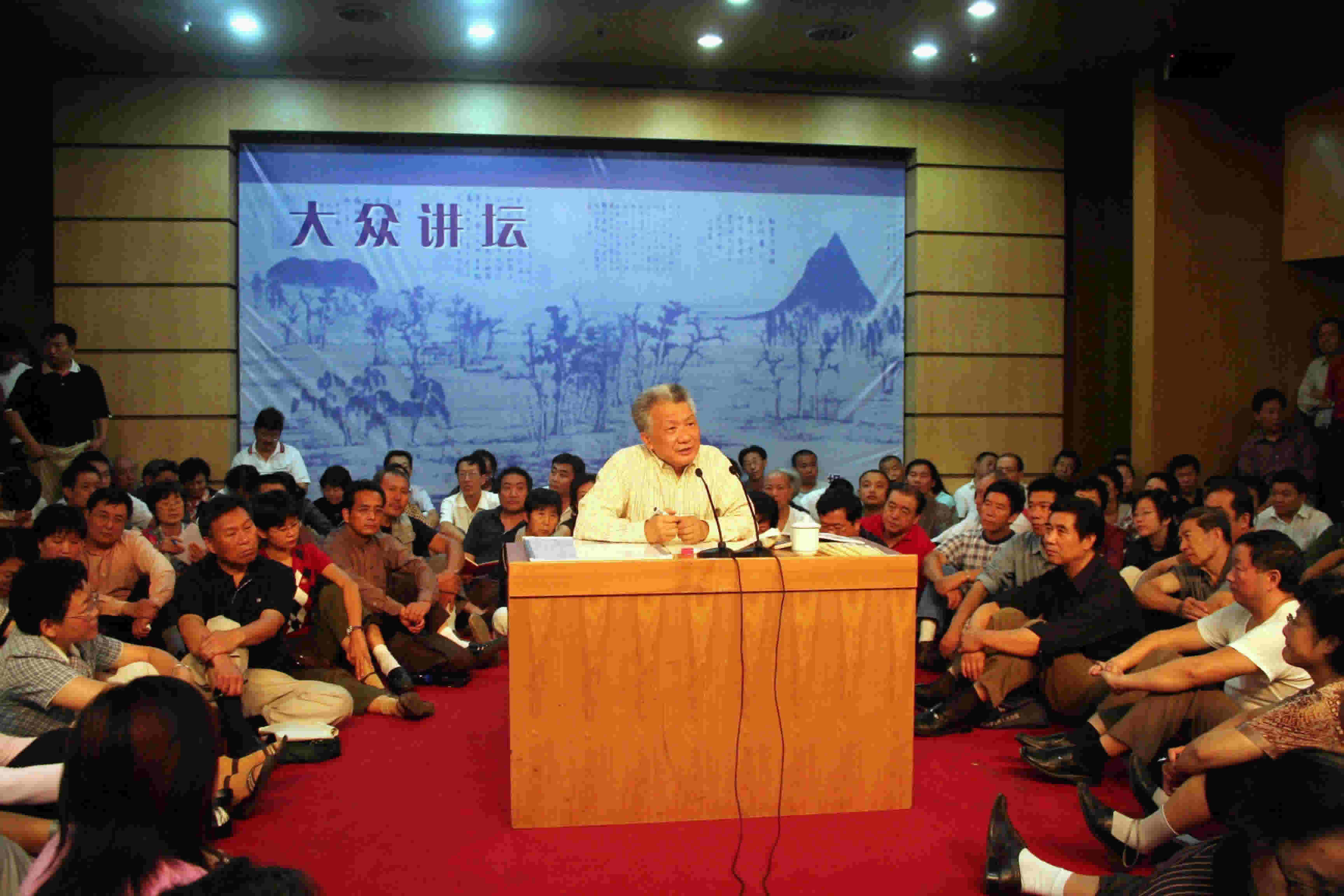

Yi is a book elucidating "image", including the 64 hexagrams deduced from the 8 trigrams: Qian , Kun
, Kun , Zhen
, Zhen , Xun
, Xun , Kan
, Kan , Li
, Li , Gen
, Gen , Dui
, Dui , with remarks attached to each hexagram and each line. The remarks serve as the interpretation of the hexagrams and lines.Historically, Zhouyi (the Book of Changes) developed out of the earlier methods of divination by casting yarrow stalks. The method inspired a more systematic approach in terms of geometric lines forming a hexagram. According to Zhouli( Rites of Zhou ), the ancient official diviner "tai bu" is in charge of three types of Yi divination: Lianshan, Guicang, and Zhouyi, and there are 8 trigrams and 64 hexagrams in each type. But now only Zhouyi survived.
, with remarks attached to each hexagram and each line. The remarks serve as the interpretation of the hexagrams and lines.Historically, Zhouyi (the Book of Changes) developed out of the earlier methods of divination by casting yarrow stalks. The method inspired a more systematic approach in terms of geometric lines forming a hexagram. According to Zhouli( Rites of Zhou ), the ancient official diviner "tai bu" is in charge of three types of Yi divination: Lianshan, Guicang, and Zhouyi, and there are 8 trigrams and 64 hexagrams in each type. But now only Zhouyi survived.
According to Han shu (History of the West Han Dynasty), the invention of the 8 trigrams is attributed to China's first humanistic emperor, a mythological figure called Fu Hsi. King Wen of Zhou is traditionally thought to be the inventor of the 64 hexagrams and the author of the remarks. Confucius studied and commented Zhouyi during his later years. The late Warring States period witnessed extensive studies on Yi. The works were incorporated into Yi Zhuan (the commentaries on Zhouyi, also called the Ten Wings). In Han Dynasty(206 B.C.—25 A.D ), during the reign of emperor Wu of Han(156 B.C.—87 B.C.), authorized official named Erudite who added their personal views when they annotated Zhouyi. Zhouyi became an important Classic named I-Ching which was not only regarded as the top of the Five Confucian Classics, but also was venerated as the origin of the great Tao( Way ). Over more than 2000 years, there appeared many schools on Yi, such as the image-number school and the meaning-pattern school. Many I-ologists built up their philosophical systems based on Zhouyi.
There are two parts in the present version of Zhouyi: the Text and Commentaries which interpret the Text. The Text includes 64 hexagrams and the remarks affiliated. The trigrams and hexagrams are made up of yin“- -”and yang“— ”lines. Each hexagram consists of a pair of trigrams. There are 8 basic trigrams, each with specific correspondences. The symbolic significance of each hexagram as a whole and each of its six lines is expressed in a cryptic poetic passages ("the remarks") and philosophical commentaries (the Ten Wings).
Zhouyi is a book explicating images, numbers, principle and divination, exposing the natural principle of universal changes and development and delivering all kinds of information by symbolizing them through 8 trigrams. It serves as an influential force on both Chinese characters and traditional Chinese philosophical thinking.It is without doubt one of the most profound systems ever formulated.
The remarks on Zhouyi actually are records either on the practical running of society and mores, or a scientific study and interpretation of nature in terms of the interaction and interchange of a few basic principles, such as yin and yang. There are many invaluable contents of prediction as well.
There are different versions of Zhouyi. The most influential ones are Zhouyi Zheng Yi, chiefly compiled by Kong Ying-da in the Tang Dynasty, which is collected into the Notes to the Thirteen Classics, and Zhouyi Ben Yi by Zhu-xi in the Song Dynasty, which later turned out to be a popular version. The silk version which was excavated at Ma Wang Dui Han tomb at Changsha, Hunan Province, is the earliest version existent and is distinctive from others. Additionally, the Collected Annotations to Zhouyi by Li Dingzuo in the Tang Dynasty and Zhouyi Zhe Zhong chiefly compiled by Li Guangdi in the Qing Dynasty exert great influences on the development of the Yi studies.





